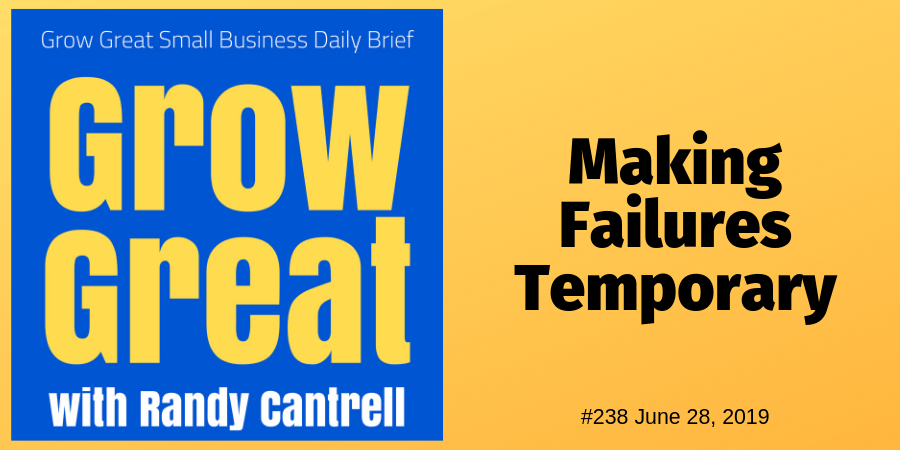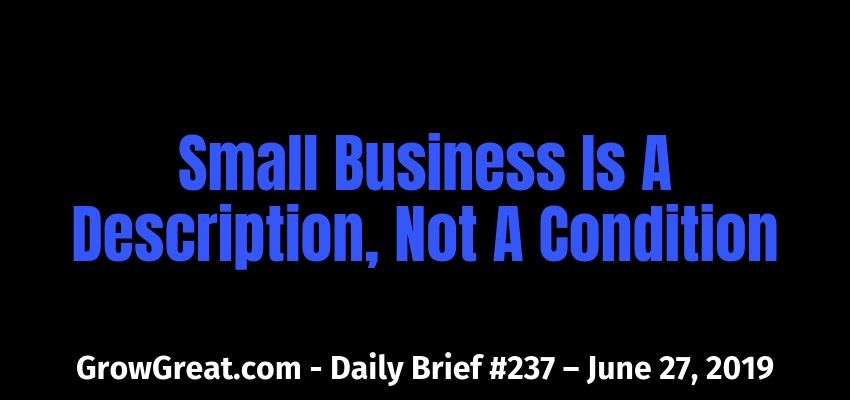Podcast: Play in new window | Download (Duration: 15:35 — 18.3MB)
Subscribe: Apple Podcasts | Spotify | | More
Small business owners.
CEOs.
Executives.
Leaders.
Whether you’re a #1 or a #2 or a team leader…surrounding yourself with others who are like you is one of THE most powerful learning, understanding and growing tools you can find.
Business people in every role, up and down the authority chain, benefit from being around others who are like them in the role. Simultaneously, they benefit from being around people who are dramatically different from them.
Peers – The Common Ground
This is where it begins. The peer advantage requires the right peers. Where’s the common ground? Can the culture created by these people fuel you in the best ways possible? And can it challenge you, too where you’ll surrender to how uncomfortable it may be for you – but you hang in there because you know it’s for your best?
Companies like YPO, Vistage, Entrepreneur’s Organization and a host of others operating all over the world provide extraordinary value to members intent on L.U.G. (learning, understanding and growing). They put people in rooms together where all the people share one common thing – the role they serve. CEOs with CEOs. COOs with COOs. CMOs with CMOs. It’s the whole “birds of a feather” deal. This is where it all must begin.
It’s important that everybody in the room – physical or otherwise – relate to what they’re doing in their respective organizations. You may have heard me refer to a group that nobody wants to qualify to join – Parents of Murdered Children. It’s a dramatic illustration though, which is why I use it. If you’re unfortunate to qualify to join that group, is there a more powerful group on the planet where you can go to instantly have everybody else in the room know exactly what you’re doing through? No. That common ground is imperative.
Peers – The Diversity
Every parent of a murdered child has their own unique context. Their stories are insanely personal. They come from every corner of society. They don’t need to share educational backgrounds, financial well-being or anything else. The one commonality is so strong it binds them together. Their diversity – their individual context and experiences – is the value!
Diversity can scare us. Don’t let it. Embrace the truth that you know what you know. It’s what you don’t know that can help you. That’s where others sharing their stories can benefit you like nothing else.
The common ground fosters safety and trust. The diversity fosters the deep conversations and sharing experiences where we find growth. You have to have both or there’s no value.
Vulnerability – It’s A Must
Don’t even think of joining a peer advisory group if you’re not willing to show your underwear. This is not an opportunity for you to always be on, trying to make every moment an Instagram moment. You’ll derive no benefit if you’re busy trying to impress and constantly judging yourself against the others in the room. This isn’t a contest designed for you to win – or lose. Not based on appearances or false / vanity measurements. It’s about growing your business, your leadership and your life.
Can you listen deeply enough to understand?
Can you pay close attention to what others say and be curious enough to seek an understanding of what they really mean?
Can you be thoughtful enough to fully participate with all the others? To help them and perhaps more importantly for some, to be helped? (That’s vulnerability. To stop acting like you know everything you need to know. It’s fine – no, it’s mandatory – if you’re going to grow. And if you’re not intent on growing, then why are even in such a group? Get out. Stop wasting everybody’s time.)
The Answer Isn’t Complicated
You should join a peer advantage group because there’s nothing on the planet that can compress the L.U.G. time requirement better. The big key to what you hear me say over and over again – “you’ll figure it out” – is time. As business people it’s urgent that we figure it out as quickly as possible because the market is moving, changing and growing more fickle all the time.
I love to ponder, but we both know there’s not a ton of time to ponder. We have to respond, react and adapt quickly. I’m fond of 7×7 fast starts – and I universally encourage business owners to do it. Sit down for one hour a week for seven weeks straight. Have a pad of paper and pen in hand. Shut off all distractions. Get in a quiet room. At the top of the paper write down one challenge or opportunity in the form of the most detailed question possible? That’s the question you’re going to wrestle with for an hour. But think of this. One lousy hour out of 168 in a week. That’s .006% of your week. It’s NOTHING. But that nothing can have a powerful impact on your ability to come up with better answers or insights to your question.
When you devote yourself to working on yourself and your business – something very few business people do because they’re too busy chasing their tails and putting out fires – then positive changes happen. When you join a peer advisory group they happen much, much quicker – and the changes are dramatically better!
This can be especially true for #1s, people at the top of the authority pyramid in their organization. Being part of a great peer advisory group can prevent “the Emperor has no clothes” syndrome so pervasive among top-level leaders.
Put in the work to find a group suitable for where you are right now. If you’re a CMO, then find where you might join up with other CMOs. Look for the common ground first. CEOs sitting around with CMOs can be profitable, but not nearly as profitable as sitting with other CEOs. Whoever you are – whatever role you serve – find a group of people like you. People shouldering the same responsibilities as you.
Find a group dedicated to what you most want to accomplish for yourself. Your willingness to be vulnerable is key, but that doesn’t mean you avoid putting your interest up near the top when you’re thinking of joining a group. I’ll tell you a secret – something you’ll learn once you join a great group – after you experience the group you’ll find yourself benefiting mostly when you avoid selfishness. By helping others and by allowing others to help you, growth will happen in those moments when the conversation may not even be specifically about you.
Culture matters. Group leadership has a big role to play. Groups tend to be uniquely specific to the person leading the group. In short, one size doesn’t fit all. Are you a Hyper Pro? Don’t know what that is? Let me explain. A Hyper Pro is somebody who would never enter a business meeting in anything other than a custom made suit and French cuffs on the shirt, highlighted by an expensive tie and other accessories. Nothing wrong with it, but a guy like me would never be in such a group. Or allow such a person into any of my groups. It’s not right or wrong. It just is. Find a group that rolls the way you most prefer to roll. And it goes beyond dress (since some groups like mine are virtual).
The sad truth is, there is plenty of opportunities for you to find a suitable group. Depending on your role and what you most want to accomplish, the search may take some time. But maybe not. Statistically, fewer than 1 or 2% of CEOs ever take advantage of such a group. There’s likely no improvement in the participation rate of other roles. I think it’s sad because the power is extraordinary. You’d think more people could see the value.
The Peer Advantage by Bula Network is my group. It’s not for everybody. Fact is, it’s pretty limited. Quite narrow.
It’s only for small business owners in the United States. That’s because I don’t want to manage a bunch of International time zones (yet).
It’s only for small business owners because they’re the people I most want to serve. And I don’t define “small” by revenue or headcount. I’m interested in serving business owners who are close to the work and closer still to their customers.
The trifecta of business building is important to me and therefore, everybody who would join one of my groups must be intently focused on it, too. This is part of that culture stuff (oh, and jeans and t-shirts are permissible and even encouraged, too – no French cuffs around here). The trifecta of business building consists of 1) getting new customers, 2) serving existing customers better and 3) not going crazy in the process. I’m intent on every member hitting that trifecta as much as humanly possible. I know it’s unrealistic to think we’ll hit all 3 all the time, but I think we can improve our odds when we focus on it.
You should also join a group because the accountability will move you forward faster than anything you’ve experienced. It’s the missing ingredient in our lives. It’s why diets and other life changes often fail. Find a group where discomfort is acceptable. In some groups they may avoid making anybody feel uncomfortable. If that’s what you prefer (I’d advise against it, but it’s your life and I respect your right to do as you please), then find one. My objective inside The Peer Advantage by Bula Network isn’t to forcibly make people uncomfortable, but if the conversation needs to go there to best serve, then that’s where we’re all going. TOGETHER. The key is to not judge. That’s the responsibility of the leader of the group. To not allow it. Everybody in the room as their role inside their company. They can roll however they want. It’s not our job or obligation to convince them to not want what they want. It’s our job to serve them to get what they want and help them clarify it.
You should join a peer advisory group. Google it. Read about it. Research it. Contact one, two or many organizations offering peer advisory groups. Figure it out. It’ll be worth it.
We’re now beginning the second half of 2019. Before you know it, this year will be history. Will you end the year being stronger as a business owner? Will you end the year prepared for high growth in 2020? Will your life be vastly better because you’ve grown? All the more reason to join a peer advisory group.
But not mine. Unless it speaks to you. Visit ThePeerAdvantage.com
Happy 4th of July to my American listeners. Lord willing, I’ll talk to you next week.
Be well. Do good. Grow great!
Randy






